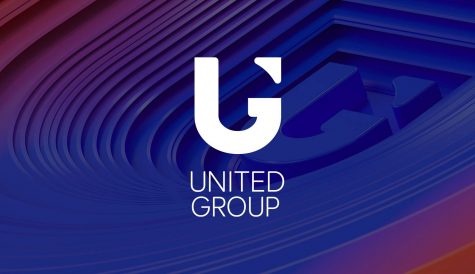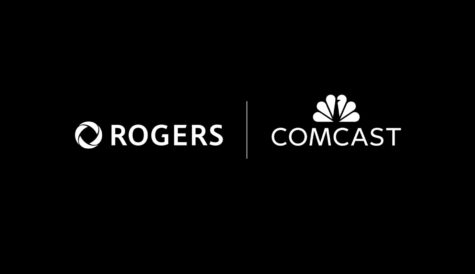Middle East movement – an in-depth look at the ME broadcast market
The emergence of pan-Arab channels and investment in local content is making the Middle East a more exciting TV market. Stuart Thomson looks at recent developments.
The Middle East TV market has long been seen as a free-to-air market and the growing popularity of new pan-regional services over the last year reinforced that impression. However, questions have long been raised about whether the advertising market is capable of supporting so many free channels.
According to Sami Raffoul of the Pan-Arab Research Council (PARC), advertising growth over the past year has been led by a handful of markets including the UAE, Saudi Arabia, Kuwait and Qatar, with Saudi Arabia likely to record growth of 11% this year. The Saudi economy has fuelled growth in pan-Arab media including TV services from MBC, Rotana, LBC and the Abu Dhabi Media Company. “Saudi Arabia is the largest of all the markets around with limited – by its own account – media capabilities,” says Raffoul. Seizing on remarks made by deputy information minister Riyadh K Najm at the recent Saudi Broadcasting Forum, Raffoul says that official Saudi recognition of the underdevelopment of the country’s media could herald a significant change in rules governing private investment in the country. The minister said that Saudi media was currently unable to compete with international players and there was a need to create an attractive environment for investors.
Raffoul says that a number of the many broadcasters to have emerged from post-revolutionary Egypt in particular have developed multichannel bouquets that have won a wide audience elsewhere in the region.
These channels have also attracted a significant slice of the pan-Arab advertising market, he says (PARC’s breakdown of the region’s advertising market distinguishes between ‘national’ and ‘pan-Arab’ media that crosses national boundaries). “Egyptian channels have snowballed in terms of advertising spend and have become a major force,” says Raffoul.
Consultant Ali Ajouz, managing partner at SAWA Media, agrees that the free-to-air market has seen significant changes over the past year, with countries that have gone through political transformations – notably Egypt – producing popular new channels including CBC, Al-Nahar and Al-Hayat, with more to come. New Libyan channels have also emerged, while, says Ajouz, a couple of Gulf-based projects have been cancelled despite significant upfront investments. “The limited TV budgets continue to put pressure on the bulk of FTA channels,” says Ajouz. “In addition, other advertising opportunities in the digital domain have started to attract advertising budgets. TV networks will now need to look into additional revenue streams whether horizontally, across other platforms, or vertically, through sponsorships and digital product placement.”
Raffoul meanwhile says he expects 2012 pan-Arab ad spend to be up about 25% on 2011, although this could hide deep discounting by broadcasters in free media zones. Egypt, which lost ground in 2011 in the immediate aftermath of the revolution and amidst continued political uncertainty, has bounced back with 18-20% growth this year. Other countries in the region have fared less well, with the effects of the conflict in Syria spilling over into neighbouring Lebanon and Jordan.
Dedicated channel
The region’s leading commercial broadcast group, MBC, has experienced modest growth year-on-year and has exceeded its initial budgets, according to Mazen Hayek, official spokesman and group director for PR and commercial. MBC has grown on the strength of content including local versions of three international talent show formats – Arab Idol, Arabs Got Talent and The Voice – as well as through ongoing investment during the slowdown, says Hayek. In addition, some Gulf economies have turned in state budget surpluses and consumer confidence has risen by comparison with 2011, he says.
The group expects growth in 2013 to be boosted by the launch of MBC Masr, the broadcaster’s new dedicated channel for Egypt, next month. This will be a general entertainment channel on the model of the existing MBC 1 brand, but with a stronger local flavour. Responsibility for the channel will be split between teams in Cairo Media City and Dubai. Hayek says the channel will be available across the region alongside MBC’s existing 11 channels. “It’s sharply targeted to cater to local tastes – if audiences [from other territories] want to watch they can but it’s targeting the Egyptian market,” he says. Hayek says MBC Masr will compete with the five serious private sector players that have emerged in Egypt. “We think competition is healthy for the market,” he says. “When we announced Masr we saw an immediate reaction from key players in the private sector wanting to improve their offerings and produce more.”
The launch of Masr represents a shift in emphasis for MBC, which has previously expanded its portfolio of services by launching genre-based channels. “We moved from launching genre channels to targeted channels by geography,” says Hayek. He says MBC does not “exclude the possibility of launching other local channels” but is focusing on the Egyptian launch for now.
Hayek says MBC’s launch a year ago of its portfolio of HD channels, using receivers supplied by Technosat, has progressed well. While the broadcaster’s MBC Drama channel is a pay TV offering that airs on OSN’s platform, offering first runs of premium drama series, this is seen as an exception. “We are a free to air satcaster. We pride ourselves on being able to provide the same premium quality content as pay TV,” he says. While shying away from any serious move into pay TV, MBC is trying to diversify its sources of revenue, 85-90% of which currently come from advertising, by expanding things such as product placement, SMS and interactive revenues as well as output deals with third parties.
Pay TV
According to Ajouz, pay TV in the region has made some progress, particularly with telcos launching multiscreen and TV everywhere services, and OTT offerings.
“The opportunities in pay TV continue to be in offering customers relevant content exclusively, at a reasonable price and by leveraging OTT technologies offering customers multiscreen, TV anywhere experience,” he says.
Following the consolidation of two the major DTH pay TV players to form OSN, the satellite TV market has also seen the launch of a new service, My-HD, this summer, headed up by former OSN executive Cliff Nelson. Dubai Media City-based My-HD has targeted a mass audience with a low-cost service, offering MBC’s HD channels in the first instance, with the aim of launching additional packages later.
[icitspot id=”29347″ template=”box-story”]
Pay TV rights continue to be dominated by a relatively few companies including OSN, MBC, Star TV, Al-Jazeera and Abu Dhabi Media, which then distribute direct to consumers or via third party networks. OSN holds most of the top-tier movie and entertainment rights, while sport is dominated by Al-Jazeera.
“The current value proposition is not one that will achieve significant growth. The immediate opportunity lies with platforms that can offer pay TV quality at better value. This is a challenge in a region with over 650 free-to-air channels, but it is possible,” says Ajouz.
IPTV and cable remain largely restricted to a few territories – namely the UAE, Qatar, Bahrain, Saudi Arabia and Lebanon, with the first two of these enjoying relatively high levels of penetration. IPTV can offer the benefit of delivering pay TV services from multiple providers via a single receiver as well as – potentially – interactive and multiscreen services. Bundled offerings are currently not much in evidence across the region, but Ajouz believes bundling could play a significant competitive role in the deployment of IPTV services, particularly as these services are being deployed in countries where regulation is effective and there is real competition.
Sport has been the mainstay of pay TV services everywhere, and the Middle East is no exception. However inflation in prices has taken its toll. According to Pierre Kakhia, president, West Asia at World Sport Group, football is the number one sport in the region, and the Asian qualifying rounds for the FIFA World Cup 2014 and AFC Champions League attracted significant viewership figures this year. However, acquisition of rights by companies backed by Sovereign wealth funds has pushed the price of rights up hugely. Abu Dhabi Sports bought English Premier League rights for the three seasons from 2010-13 for the Middle East and North Africa region for a reported US$360 million (€222 million), three times more than the fee paid by the previous rights holders. Al Jazeera meanwhile has adopted an aggressive acquisition strategy to build a global sports brand, recently taking national team and club competition rights in a deal with the Asian Football Confederation. “Broadcasters who are looking to increase their audience shares are finding that sports content with local relevance can deliver growth,” says Kakhia. “This, together with the proliferation of specialty sports channels across the Middle East in recent years has undoubtedly increased the competition for premium and exclusive programming which in turn, has driven the value of these rights beyond reasonable levels.”
For Kakhia, the acquisition of rights to major competitions including the UEFA Champions League and the World Cup “are usually strategic long term investments as broadcasters struggle to see a return in the short to medium terms where advertising revenues alone cannot cover the rights costs”. However, he says that broadcasters in the region can “drive value from local and regional events with domestic relevance” with competitions such as domestic football rights, the AFC Asian Cup and AFC Qualifying Round for the FIFA World Cup 2014. “There’s a huge demand for local and regional events because of their strong relevance to domestic audiences. Middle eastern sports fans have a strong affinity and loyalty to their national teams, clubs and athletes and therefore, these programmes register significantly higher TV audiences than international competitions like the EPL and UEFA Champions League,” says Kakhia.
Pay TV has struggled, says Kakhia, because audiences can’t see a unique selling prospect. “The key issue for pay TV operators is that some of their programming is broadcast on a free-to-air basis causing confusion among their audiences about the pay TV structure,” he says.
Original content
While pay TV leader OSN has been attempting to develop a clear unique selling prospect for pay TV by investing in content to be shown in a premium window and by providing offerings targeted at specific demographic groups (see sidebar), the development of original content has also been boosted across the region by investment from commercial free-to-air broadcasters including MBC.
As well as developing local versions of international formats the latter has made significant moves to develop local productions. This year has seen one of the most significant to date in the form of historical drama series Omar, telling the story of the second Islamic Caliph, Omar ibn Al-Khattab. The series aired on MBC 1 during Ramadan and has been sold internationally outside the Arab world to broadcasters including Turkey’s ATV and Indonesia’s MNC TV Network.
According to MBC’s Hayek, the exercise is one the broadcaster will seek to repeat. “The challenge is to be able to produce content that caters to [international] tastes and brings production values that can be exported. We can easily do it with other mega-productions,” he says.
MBC will also invest in “two big new shows” based on international format for 2013, says Hayek, complementing its existing talent show line-up, as well as further investing in local Arabic series, Turkish soaps and other content popular across the region.
The ability of pay platforms to drive subscriptions through the kind of mould-breaking, high-profile shows that have been a staple of HBO in the US, is severely limited in the Arab world, according to Ajouz. What pay TV needs, he says, is for local sports to emerge as a truly premium service, with world-class prizewinning teams. “Serious subscriber growth will take place once local sports become premium and once pay TV platforms acquire these rights exclusively.
[icitspot id=”29355″ template=”box-story”]
Until that happens, pay TV growth will be driven by value and will enjoy growth in small incremental [doses],” he says.
Along with the rise of Egyptian channels, that country has emerged as a source of content with pan-regional appeal, to some extent filling a gap left by Syria. However, many of the most popular programmes continue to be Turkish shows dubbed into Arabic. According to Ajouz, Turkish rights tend to be sold in separate pay and free windows, with free-to-air channels often acquiring both and then sub-licensing the pay TV rights to others. “Whilst more shows are available, good shows are being offered at very high rates per episode that only the top 10% can afford. The biggest spenders are either government-subsidised private networks, or government-owned networks. Private free-to-air networks with significant budgets are few,” he says, adding that post-revolution Egyptian private channels have nevertheless been active in content acquisition and production. Programming costs across the region continue to be less than advertising revenues capable of sustaining them, he says.
Measurement tools
Nevertheless, according to PARC’s Raffoul, broadcasters are becoming more professional in their approach, with a growing realisation that to be successful, players need significant financial resources and talented people, and an ability to create programming and run the channel economically and efficiently. He believes there will be a “cleaning up” over the next two years, especially if the political situation in the region becomes more stable and channels that are being financed for political ends alone begin to disappear.
One of the key things that could facilitate the “cleaning up” process is clear and transparent audience measurement tools.
The UAE has commissioned and installed a metering system but the numbers it produces still appear to be subject to debate. Saudi Arabia meanwhile is considering bids to implement a similar system. According to Raffoul there is some movement towards measuring affinity with channels amongst viewers based on the Targeted Group Index method established in the UK.
MBC’s Hayek, meanwhile, says that his group is “supportive of the installation of advanced audience measurement tools…based on international norms and practices”. He says that accurate audience measurement is as important for a broadcaster such as MBC as it is for advertisers, helping as it does to determine scheduling priorities and weigh the relative appeal of shows, presenters and guests. However, he cautions against the idea that measurement tools can be a magic bullet, citing the example of what has happened in Turkey, where audience research body TIAK’s management of ratings measurement has been plagued by a series of controversies.
While the creation of trusted measurement tools should – in theory at least – work to the benefit of local commercial players, for international channels targeting international advertisers across multiple territories they are less relevant: the absence of international audience measurement standards means that surveys of key demographics such as the European Marketing Survey (EMS) are given more weight. For international players, opportunities for entry into the region’s markets have been relatively limited, but a number of high-profile joint ventures have made news in recent years. These have included Fox International Channels’ partnerships with Alwaleed bin Talal bin Albdulaziz bin Saud’s Rotana, launching channels including Fox Movies, Fox and FX, and a separate joint venture with Abu Dhabi Media for a local free-to-air version of the National Geographic Channel. Other joint ventures include Sky News Arabia, an Arabic news channel created by BSkyB and Abu Dhabi Media Investment Corporation, which joins a line-up of local news channels that includes Al Jazeera, MBC’s Al Arabiya and US-government-backed Al Hurra. The latest is Alarab, an Alwaleed-backed news channel that will include a five-hour block from Bloomberg, set to launch in September next year.
“This will be our Arabic language proposition. There are no plans to launch a 24/7 Arabic channel to compete with the likes of Al Arabiya, CNBC Arabia and Al Jazeera,” says Lindsay Oliver, international commercial director at Bloomberg Television. “The launch of Alarab is a strategic alliance and part of our content localisation strategy building on what we do incredibly well – global business, finance and economic coverage – combined with the expertise of local and regional newsgathering experts.”
According to Oliver, Bloomberg will provide one executive producer and two producers and media consultants to the Alarab venture. The Bloomberg production staff within the organisation will be involved in the production of the branded business programming together with the Alarab team. In addition, senior Bloomberg TV executives will be involved in an advisory capacity. The five-hour block will be Bloomberg-branded and have the same look and feel as the English-language channel. “Bloomberg’s reporting will take on a more localised perspective to provide a daily round-up of the business and economic stories making the headlines across both Arab and international media. There will be daily reports from the MENA markets as well as a weekly round-up of financial news. Moving beyond the news headlines, it also throws the spotlight on Arab business leaders,” says Oliver.
With continued growth in interest from international investors in a range of new ventures, the explosion in channels coming out of Egypt, the development of local variations of international formats and investment in new dramas with high production values, it seems that the Middle East is emerging as a much more exciting TV market than has been the case hitherto.




